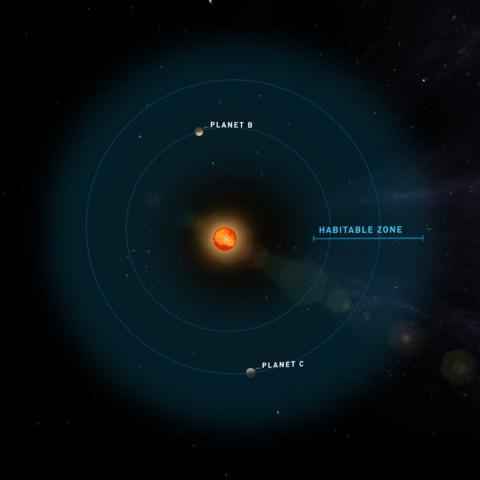Two Earth-like planets found near dwarf star

Two planets similar to Earth have been discovered near Teegarden's Star
The discovery is a big success for the Carmenes astronomical project.
Kepler-452b has been for some time now consider Earth's closest cousin in terms of characteristics. It belongs in the Cygnus constellation and is approximately 1400 light-years away from us. Now, however, a team of international researchers led by the University of Göttingen has discovered two new Earth-like planets near one of our nearest neighbouring stars. Named Teegarden's Star, it's located approximately 12.5 light years away from us, 2700 degrees Celsius warm, and roughly ten times lighter than the Sun. It was first discovered in 2003.
The news of the discovery of the two planets was announced in a press release by the University of Göttingen. “The two planets resemble the inner planets of our solar system,” comments lead author Mathias Zechmeister of the Institute for Astrophysics at the University of Göttingen. “They are only slightly heavier than Earth and are located in the so-called habitable zone, where water can be present in liquid form.”
The researchers believe that the two newly discovered planets could in fact be part of a larger system. Teegarden is the smallest star in which researchers have been successful so far in measuring the weight of a planet directly. “This is a great success for the Carmenes project, which was specifically designed to search for planets around the lightest stars,” says Professor Ansgar Reiners of the University of Göttingen, one of the scientific directors of the astronomical project.
The Carmenes project is currently carried out by the universities of Göttingen, Hamburg, Heidelberg, and Madrid, the Max-Planck-Institut für Astronomie Heidelberg, Institutes Consejo Superior de Investigaciones Científicas in Barcelona, Granada, and Madrid, Thüringer Landessternwarte, Instituto de Astrofísica de Canarias, and Calar-Alto Observatory. Clearly, Earth has more cousins now and in closer proximity.
Cover image courtesy: University of Göttingen
Digit NewsDesk
Digit News Desk writes news stories across a range of topics. Getting you news updates on the latest in the world of tech. View Full Profile





